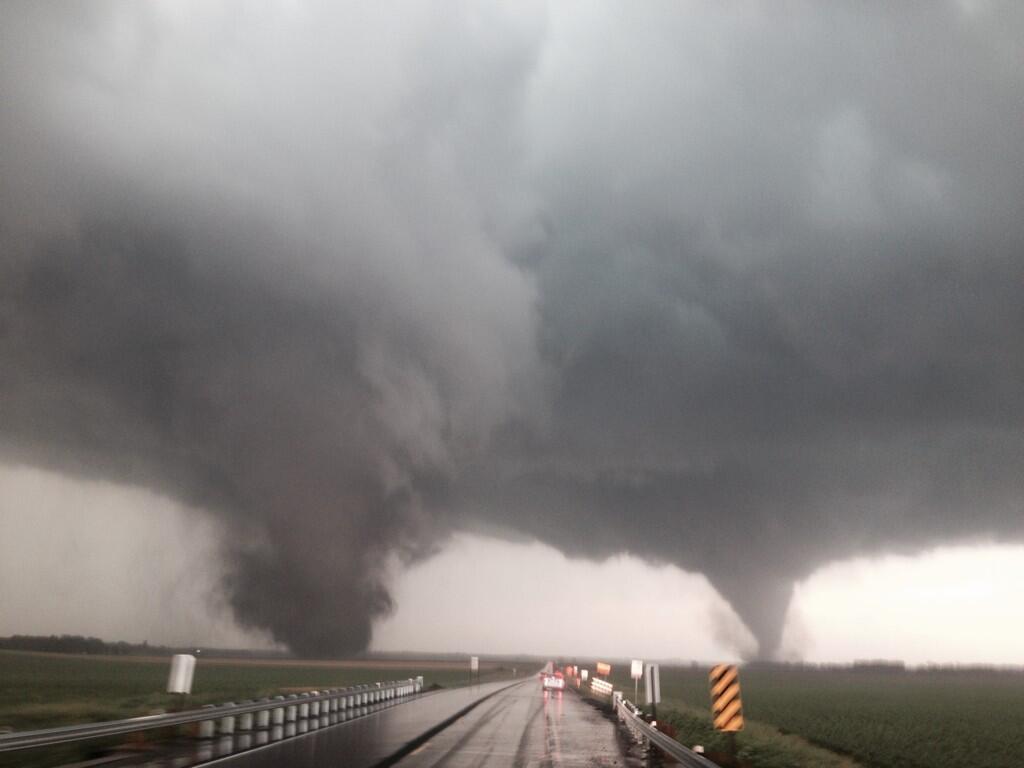
© Matt CokerEmerging pattern: fewer tornado days in U.S. - but more tornados!
Twin tornadoes destroyed almost three-quarters of Pilger, a small Nebraska town. According to one expert, the last powerful double tornado on record occurred in 1999.
Residents of a small Nebraska town are returning to what is left of their homes Tuesday after a pair of tornadoes flattened nearly every brick structure in its path. Two people are dead.
"It was flatness," homeowner Jerry Meyer told the Omaha World-Herald. "There was nothing on my whole block."
The twin tornadoes on Monday are blamed for destroying almost three-quarters of Pilger, Neb., a town of 350 people located 60 miles southwest of Sioux City, Iowa. In all, four tornadoes struck the region that includes the nearby towns of Wisner, Stanton, and Pender.
The two tornadoes hitting Pilger so hard touched down within a mile of each other and then merged south of Pilger over the Elkhorn River, the National Weather Service reports.
While it is not uncommon for one tornado to emerge following the dissipation of a first, it is rare for two tornadoes to operate simultaneously, meteorologists say.
When two tornadoes do appear, one is often stronger than the other. But this was not the case in Pilger, where both tornadoes tore through the landscape with the same intensity.
It is more common for a second tornado to form by orbiting the primary tornado, which ultimately dissipates before the satellite tornado intensifies in strength, according to Greg Carbin, a meteorologist at the National Oceanic and Atmospheric Administration's Storm Prediction Center in Norman, Okla.
"Nothing says there needs to be a gap" between tornadoes, Mr. Carbin told The Washington Post. "There usually is. Monday there wasn't."
Having two at full strength at the same time could mean they were connected to a multiple vortex tornado, which features many tornadoes moving in tandem around a main vortex.
According to Carbin, the last powerful double tornado on record occurred on May 3, 1999. A total of 74 tornadoes touched down across Oklahoma and Kansas, killing 46 people, injuring 800 others, and causing $1.5 billion in damage.
On Monday, about 75 percent of Pilger was either heavily damaged or destroyed, confirmed Stanton County Sheriff Michael Unger. In addition to the two people who died, 16 were hospitalized.
Despite the devastation - the town's middle school, post office, city hall, and firehouse, along with three-quarters of its homes, were among the destroyed buildings - Sheriff Unger said the town was fairly fortunate, considering it had only 10 to 15 minutes of warning before the tornadoes struck.
"We're small-town America. Our motto is, 'We're a town too tough to die,' " he told reporters Tuesday.
Nebraska Gov. Dave Heineman (R) has issued a state of emergency, and he toured the damaged area Tuesday. He told onlookers the town will rebuild.
"This is a tough little town that is not going to die, right?" he asked one resident.
While the tornadoes dissipated near Sioux City, harsh storms pounded surrounding Midwestern states, causing damage and power outages. MidAmerican Energy in Iowa reported more than 29,000 customers without power in Des Moines and 213 without power in Council Bluffs.
Also, a tornado moved from northern Illinois into southern Wisconsin after midnight Tuesday, the National Weather Service says. Platteville, Wis., about 70 miles southwest of Madison, took the heaviest damage: About 40 homes were damaged and five people injured. Three residence halls and the football stadium at the University of Wisconsin satellite campus were also damaged.
Comment: Also see: Freak thunderstorm spawns twin tornadoes as severe outbreak hits U.S.